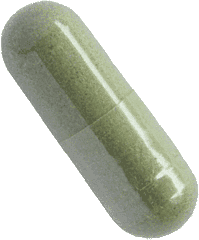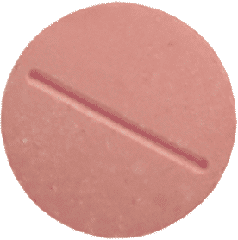
































There are options beyond opioids.
Addiction to prescription pain medications, also known as opioids, has become an epidemic in Colorado and across the nation.
For many, addiction begins with a legal prescription.
Before you take an opioid for pain, take a moment to ask your doctor:
- Am I at risk for addiction?
- Could something else work?
- How long will I be taking them?
- Are you prescribing the lowest possible dose?
- What's the plan to taper off the medication?
What you need to know.
Prescription opioids are used to help relieve moderate to severe pain and are often prescribed following a surgery or injury or for certain health conditions. These medications can be an important part of treatment but also come with serious risks.
It is important to work with your health care provider to ensure you are getting the safest, most effective care.











Risks and what to avoid.
Prescription opioids carry serious risks of addiction and overdose—especially with prolonged use—and a number of side effects, even when taken as directed. An opioid overdose, often marked by slowed breathing, can cause sudden death.
Risks and side effects of opioid use:
Risks and side effects of opioid use:
- Tolerance: more medication is needed for the same pain relief.
- Physical dependence: Symptoms of withdrawal occur when medication is stopped.
- Increased sensitivity to pain.
- Constipation.
- Nausea, vomiting and dry mouth.
- Sleepiness and dizziness.
- Confusion.
- Depression.
- Low levels of testosterone that result in lower sex drive, energy and strength.
- Itching and sweating.
Factors that increase risk of addiction or overdose:
Factors that increase risk of addiction or overdose:
- History of substance abuse.
- Mental health conditions such as depression or anxiety.
- Sleep apnea.
- Advanced age (65 years or older).
- Pregnancy.
Medications and substances to avoid when taking opioids:
Medications and substances to avoid when taking opioids:
- Alcohol.
- Anxiety medications in the Benzodiazepine family (Xanax® or Valium®).
- Muscle relaxants (Soma or Flexeril®).
- Sleep aids that function as hypnotics (Ambien® or Lunesta®).
- Other prescription opioids.
Three things you can do.
Speak up.
Chances of becoming a long-term opioid user increase after just five days of taking opioids. Before you take an opioid for pain, talk to your doctor or dentist about your risk of addiction.
- Am I at risk for addiction?
- Could something else work?
- How long will I be taking them?
- Are you prescribing the lowest possible dose?
- What’s the plan to taper off the medication?
Opt out.
Almost 8,000 opioid prescriptions are filled every day in Colorado, but we can lower that number. There might be other ways to treat your pain that are more effective with fewer risks and side effects.
There are treatments that might work better with fewer risks and side effects:
Toss leftovers (safely).
Two-thirds of all misused opioids come from prescriptions that are unused by friends and family. Keeping usunsed opioids in your home can increase the risk of theft, so it’s crucial to dispose of unused or expired prescription opioids immediately.
There’s no such thing as safe leftovers.
Getting rid of opioid medications minimizes the chance of someone misusing them, but don’t just flush them—it’s important to dispose of them properly to reduce their impact on the environment. The best way to get rid of medications is through the Colorado Household Medication Take-Back Program, which offers secure collection boxes throughout the state.
Home disposal.
If you can’t access one of the take-back locations or buy a mail-back envelope and have to dispose of medication at home, do so safely. Do not flush your medicine or give it to someone else to dispose of it for you. Instead, follow these steps:
- Remove medication from its original container (be sure you remove the label or cross out any identifying information).
- Mix the medication with something that can’t be eaten, like kitty litter, coffee grounds, sawdust, etc.
- Place the mixture in a resealable bag or other durable container that prevents leakage.
- Wrap the container in newspaper or a plain brown bag to conceal its contents.
- Place it in your trash the day your trash is collected.
Opioid safety.
If you’ve been prescribed an opioid, there are ways to take them safely and store them securely to prevent misuse and addiction.
- Take only opioids prescribed to you.
- Never share your prescription opioids.
- Take opioids only as directed, and don’t change the dosage on your own. If you feel like you need to take more or take them more often, immediately contact your doctor or pharmacist.
- Keep a list of all medicines and supplements you take, and share it with your doctor or pharmacist.
- Ask your doctor how your medicine (prescription or over-the-counter) will interact with other medicines and alcohol.
- Ask your pharmacist or study the common risks and side effects of opioids. Call your doctor if you experience an unexpected side effect.
- Don’t mix opioids with depressants, including sleep aids, anti-anxiety medications or cold medicine because combining them can be dangerous.
- Store opioids out of reach of children, family, pets and guests, preferably in a locked place. Young children might think they are candy or take them by mistake.
- Know where your opioids are at all times and keep track of the number of pills that are in your prescription so you are immediately aware if any are missing.
- Keep opioids in their original container with the label attached and the child-resistant cap secured.
- Store opioids as directed: usually in a cool, dry place. Avoid the kitchen and bathrooms, which can be hot and humid.
- Do not combine medications in one bottle.
What opioid addiction looks like.
Learning to recognize the physical, behavioral and psychological signs and symptoms of opioid addiction is important. Health care providers should diagnose addiction.
Warning signs of opioid addiction include:
Warning signs of opioid addiction include:
- Taking painkillers more often, even when there’s not much discomfort.
- Spending an increasing amount of time obtaining prescriptions.
- Cash, valuables or medicine missing from the home.
- Mood and personality changes or defensiveness.
- Excessive drowsiness and lack of appetite.
- Withdrawal from friends, family or social activities.
- Neglecting responsibilities.
- Increasing sensitivity to normal sights, sounds or emotions.
- Blackouts and forgetfulness.
Get help now.
If you or someone you know is experiencing or showing the signs above, get help now. Several Colorado agencies offer help with addiction or dependency, including:
Click to learn more about Center for Disease Control (CDC) guidelines for prescribing opioids for chronic pain.




